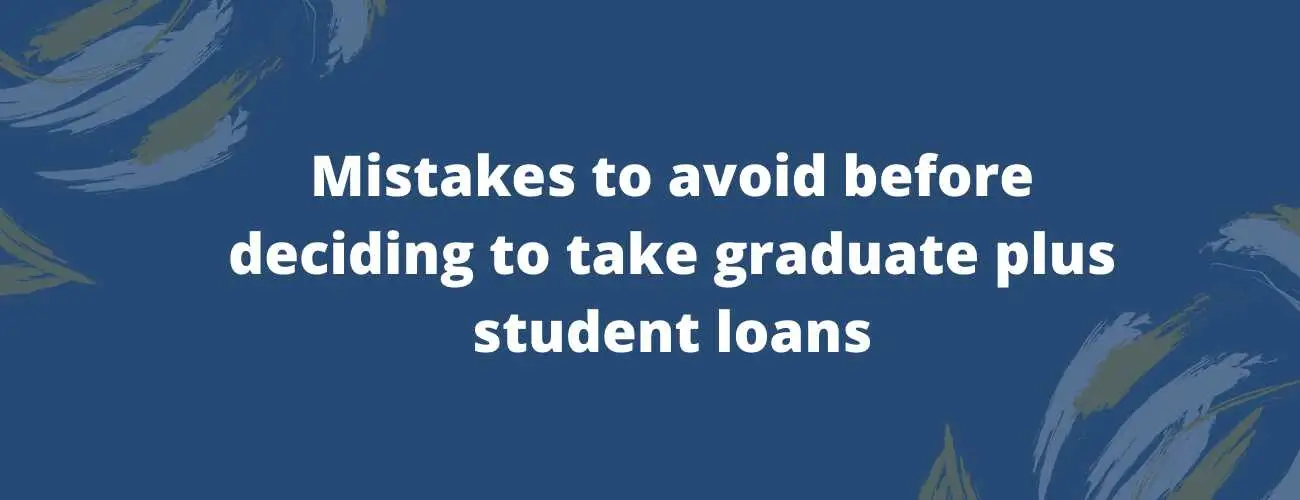Direct PLUS Loans - Interest Rates, Repayment and Application Process
Direct PLUS Loan is offered by the government to the eligible students and parents. Learn about steps to apply for the loan, its eligibility, interest rates, types, and more.
Updated by Sharan Kumar on 16th October 2020
You must be wondering, what is a Federal Direct PLUS Loan and how to apply for the same? The answer is right here.
Federal Direct PLUS loan is a low, fixed interest rate loan with fairly flexible loan limits. It is given to graduate/professional students or the parents of undergraduate students.
They are more like private loans in a way that they are unsubsidized which means the interest accumulates as soon as the loan is disbursed.
Let's explore its type and eligibility below.
Table of contents
- Types of Federal Direct PLUS loans
- 5 Steps to apply for a Federal Direct PLUS loan
- Grad PLUS loans
- Parent PLUS loans
- Terms of a Direct PLUS loan
- Advantages and drawbacks
- Loans repayment options
- Improvements
- Conclusion
Types of Federal Direct PLUS Loans
There are mainly two types of Direct PLUS loans -
-
Parent PLUS loans - It is given to the parents of undergraduate students.
-
Grad PLUS loans - This offered to graduate or professional students.
Both of the loans are used for paying for the education of the students.
The Graduate/Professional Loan is for payment of the expenses revolving around education which are not already covered under any financial aid/grants and are only mountable up-to-the full cost of attendance.
The Parent PLUS Loan is for the parents of any dependent undergraduate students who require a loan over the financial aid/grants or unsubsidized loan that is already taken to pay for the expenses.
These loan programs are unsubsidized and accumulate interest during the period the student is in school.
The choice of payment can be made to start during the school period or permission of deferment can be availed to begin payments anytime up-to 6 months after the student graduates provided the student has completed half time.
Risks of direct PLUS loans can help you be aware of the downside of any loan you apply for. Similarly Federal Direct PLUS Loan, there are few things to consider before considering taking these loans.
5 Steps to apply for a Federal Direct PLUS Loan
There exists an additional step beyond submitting the Free Application for Federal Student Aid also known as FAFSA.
1 - Submit the FAFSA
The easiest way to submit the FAFSA is online using your FSA ID at the studentaid.gov.
2 - Check with the school on how to proceed
Usually, this involves applying for the PLUS loan but some may have other requirements or steps to proceed through.
3 - Apply for either parent or graduate/professional loan online
Gather all the required documents first as the FAFSA has to be completed in a single session. Apply for the loan which corresponds to your requirements.
A parent can apply for Parent PLUS Loans only and similarly a graduate/professional can apply for his or her own Grad PLUS Loan only.
4 - If you require a deferment apply for it in the FAFSA application
As the loan repayment starts as soon as the loan is disbursed, if you want to pay for the loan after the term of school you may request for the same in the FAFSA application.
You may also request to begin payments 6 months after graduation or else the payments will be required to begin within 60 days after the last loan amount is disbursed.
*The extra step involves the lifting of any credit freeze that is set up.
You will not be able to proceed with credit checks at the credit bureaus if the credit freezes are lifted.
5 - Sign a Master Promissory Note
This is a requirement after requesting a loan. One may be required to attend an entrance counseling if they are a first-time, Grad PLUS Loan borrower.
You will be guided about the process of FAFSA application and further formalities and have the terms and conditions of the loan scheme explained to you by
Grad PLUS Vs Parent PLUS Loans
The U.S. Department of Education provides Direct PLUS Loans to eligible graduate or professional students and parents of undergraduate students through schools participating in the Direct Loan programs.
Parent PLUS differs from other direct loans in the sense that repayment starts immediately after disbursement of the loan unless it is requested by the borrower to start later. It requires credit checks and has high-interest rates and fees. For the parents, they come with fewer repayment options.
Grad PLUS Loans
Grad PLUS loans enable graduate and professional students to borrow money to pay for their own education. Graduate students can borrow to pay for costs other than the ones not already covered by other financial aid/grants, the up-to-the full cost of attendance.
1 - How do I know if I qualify for a Grad PLUS Loan?
To be eligible for a Grad PLUS Loan, one must be -
-
Either a professional or a graduate student who is currently enrolled in an eligible school that has a program that which leads to a graduate or professional degree certificate,
-
Not have a bad credit history,
-
You must meet the general criteria for financial student aid.
2 - Interest rate
For the Direct PLUS Loans that were first disbursed between July 1, 2018, and July 1, 2019, the interest rate is 7.6%. This is a fixed interest rate for the entire life of the loan.
3 - Maximum amount which can be borrowed
The maximum PLUS loan amount that can be borrowed is the cost of attendance (which is determined by the school) excluding any other financial aid you have received.
4 - When does repayment begin?
You are not required to make any loan repayments until 6 months after you graduate, leave school, or drop out of school before the completion of half time enrollment.
During any period when you’re not required to make payments, interest will accumulate on your loan. You may choose to pay the accumulated interest or allow the interest to be capitalized (that is added to your loan principal balance) when you have to begin making payments.
Your loan servicer will let you know when your first payment is due.
5 - Is it possible to still receive a Grad PLUS loan with a bad credit history?
A credit check is necessary and shall be performed during the process of applying for a Grad PLUS loan. If you have a bad credit history, you can still receive a Grad PLUS Loan through one of the following options -
a) Obtaining a co-signer who does not have a bad credit history. A cosigner is someone who agrees to repay the Grad PLUS loan if you do not repay it.
b) Explaining to the satisfaction of the U.S. Department of Education that there are justifying circumstances relating to your adverse credit history.
With either of the options, you also must complete credit counseling for PLUS loan borrowers on the StudentLoans.gov website.
6 - Extra steps to be taken to receive my loan
If you are found to be eligible for a Grad PLUS Loan, you will be required to sign a document called the Direct PLUS Loan Master Promissory Note (MPN), which states that you are agreeing to the terms of the loan.
If you previously have not received a PLUS Loan, it will also be necessary for you to complete the entrance counseling. Contact the financial aid office at your school that you are planning to attend for instructions on how to complete entrance counseling.
7 - Charges levied on the loan other than interest
There is a loan fee on all Direct PLUS Loans. The loan fee is a percentage of the total loan amount and is proportionately deducted from the loan during disbursement.
The percentage varies depending on when the loan is first disbursed. It is as follows.
Loan Fee
-
Between Oct. 1, 2017, and Oct. 1, 2018 - 4.264%
-
Between Oct. 1, 2018, and Oct. 1, 2019 - 4.248%
Loans first disbursed before Oct. 1, 2017, have different loan fees.
8 - How to receive the loan?
The school will first send the Grad PLUS loan funds to your school account so you can pay for tuition, fees, room and board, and other school charges. If any amount of loan funds remain, your school will then give them to you to help pay other educational expenses.
9 - What happens after receiving the loan?
After you receive your Grad PLUS loan, you shall be contacted by your loan servicer (the loan servicer you will be repaying your loan to). Your loan servicer will regularly provide updates on the status of your Grad PLUS loan.
10 - Loan Repayment Plans
There are several repayment options that are made available and designed to meet the individual needs of a variety of borrowers, including income-driven repayment plans that determine your monthly payment amount based on your current income and the family size that you are required to support currently.
Your loan servicer may help you understand which repayment options are available for you and also help you pick out the one that suits you according to your situation. Usually, you’ll have anywhere between 10 to 25 years to repay your loan, of course, it is depending on the repayment plan that you choose.
11 - What if I have trouble repaying my loan?
If you are having trouble repaying your loan it is best advised to get in touch with your loan servicer as soon as possible. Your loan servicer will be able to understand your situation and have a couple of options for dealing with the loan repayment and how to go about keeping the loan in good standing.
For example, your loan servicer may suggest you options where you are able to change the monthly repayment plans in such a way as to reduce the amount you require to pay every month albeit at the cost of a longer repayment period.
Also, you may have the option of opting for a forbearance or a deferment accordingly which allows you to temporarily reduce the amount you are required to pay back or completely stop payment for a period of time respectively.
12 - Can I cancel the loan if I decide that I don’t need it or if I need less than the amount offered?
If you decide you do not require the loan anymore, you may proceed to cancel all or part of it by contacting the school before it is disbursed. If your loan amount has already been disbursed you may cancel all or part of it by contacting the school and making a request within a stipulated time period which will be mentioned in the Master promissory note that you signed at the time of availing the loan.
13 - Can my loan ever be forgiven (canceled) or discharged?
Yes, But sometimes, you may be eligible to have all or part of your loan forgiven (canceled) or discharged.
14 - Where can I find information about the Grad PLUS loans I’ve received?
Visit the section “My Federal Student Aid” to access all the information about the federal student loans and other financial aid you have received and to get the contact information for your loan servicer.
Learn more on Grad PLUS Loan
Parent PLUS Loans
Parent PLUS loans allow parents of dependent students to loan money to cover any costs not completely covered by the student's financial aid package, which amounts to anything less than or equal to the full cost of attendance. The program does mention a total limit to how much parents may borrow.
1 - How do I know if I qualify for a Parent PLUS loan?
To be eligible for a Parent PLUS loan one must -
-
Be the adoptive or biological parent or in some cases the step-parent of the dependent undergraduate student in whose favor the loan is being borrowed who is enrolled for at least half time in an eligible school.
-
You must not have any bad credit history
-
You must meet the general eligibility criteria for receiving federal student aid and the dependent undergraduate student must also meet the same requirements.
*Note - for the grandparents of a dependent undergraduate student if the student isn't legally adopted by them they are legally ineligible to receive the parent PLUS loans even if they have had the primary responsibility of raising the child/student.
2 - Current interest rate
For Direct PLUS Loans first disbursed between July 1, 2018, and July 1, 2019, the interest rate is fixed for the life of the loan at 7.6%.
3 - Borrow limits on a Parent PLUS Loan
The maximum PLUS Loan amount that one can be borrowed is the cost of attendance (which is determined by the school) excluding any other financial aid you have received.
4 - Am I required to make payments while my child is still in school?
If you put in a request for a deferment during the application process, you will not be required to make any payments while your child is enrolled (for at least half-time) and for an additional 6 months after your child graduates, leaves school, or drops before the half-time of enrollment.
If the school your child is attending asks you to put in your request for a Parent PLUS loan at the studentloans.gov, you will be given the option of requesting a deferment as part of the loan request process itself. You can also contact your loan servicer and put in a request for a deferment via them.
If you do not request a deferment, you will be expected to start making payments as soon as the last of the loan amount is disbursed. During any time period when you are not required to make payments, interest will accumulate on your loan.
You may choose to pay the accumulated interest or allow the interest to be added to your loan principal balance when you have to start making payments. Your loan servicer shall notify you when your first payment is due.

source - pexels.com
5 - Am I still eligible for a Parent PLUS loan if I have a bad credit history?
A credit check will be performed during the application process. If you have an adverse credit history, you may still receive a Parent PLUS loan through one of these two options -
a) Obtaining a co-signer who does not have a bad credit history. A co-signer is someone who agrees to repay the parent PLUS loan if you do not successfully repay it. They cannot be the child on whose behalf you are borrowing.
b) Explaining to the satisfaction of the U.S. Department of Education that there are justifying circumstances relating to your bad credit history. With either of the options, you are also required to complete credit counseling for Parent PLUS loan borrowers on the studentLoans.gov website.
6 - What are the extra steps needed to receive my loan?
If you are found to be eligible for a Parent PLUS loan, you will be required to sign a Direct PLUS Loan Master Promissory Note (MPN), agreeing to the terms of the loan.
Contact the financial aid office at the school your child is planning to attend for details regarding the process at that school. If you’re taking out Parent PLUS loans for more than one child, you’ll need to sign separate Direct PLUS Loan MPNs for the loans you receive for each child.
7 - Are there any additional charges other than the interest on a Parent PLUS loan?
Yes, there is a loan fee on all Direct PLUS Loans. The loan fee is a percentage of the loan amount and is proportionately deducted from each loan disbursement. The percentage varies depending on when the loan is first disbursed, as shown in the chart below.
Loan Fee
-
On or after Oct. 1, 2017, and before Oct. 1, 2018, 4.264%
-
On or after Oct. 1, 2018, and before Oct. 1, 2019, 4.248%
-
Loans first disbursed before Oct. 1, 2017, have different loan fees.
8 - How will I receive my loan?
The school will first apply parent PLUS loan funds to the student’s school account to pay for tuition, fees, room and board, and other school charges.
If any loan funds remain, your child’s school will give them to you to help pay other education expenses for the student. With your authorization, the school can pay the remaining loan funds directly to the student. Get more information about receiving aid.
9 - What happens after I receive my loan?
After you receive your parent PLUS loan, you will be contacted by your loan servicer (you will repay your loan to the loan servicer). Your loan servicer will provide regular updates on the status of your Parent PLUS loan.
10 - What types of loan repayment plans are available?
Parent PLUS borrowers are eligible for the following repayment plans -
-
Standard repayment plan
-
Graduated repayment plan
-
Extended repayment plan
*Note - Parent borrowers can become eligible for an additional repayment plan—the Income-Contingent Repayment Plan—by consolidating their parent PLUS loans into a Direct Consolidation Loan.
Use the Repayment Estimator to get an early estimate of what your monthly payment amount would be under the plans for which you’re eligible.
11 - What if I have trouble repaying my loan?
If you are having trouble repaying your loan it is best advised to get in touch with your loan servicer as soon as possible. Your loan servicer will be able to understand your situation and have a couple of options for dealing with the loan repayment and how to go about keeping the loan in good standing.
For example, your loan servicer may suggest you options where you are able to change the monthly repayment plans in such a way as to reduce the amount you require to pay every month albeit at the cost of a longer repayment period.
Also, you may have the option of opting for a forbearance or a deferment accordingly which allows you to temporarily reduce the amount you are required to pay back or completely stop payment for a period of time respectively.
12 - Can my loan ever be forgiven (canceled) or discharged?
Yes, your loan can be forgiven or discharged under certain specific circumstances. Look into loan forgiveness and discharge options.
13 - As a Parent PLUS loan borrower, can I transfer responsibility for repaying the loan to my child?
No, as the loan is taken out in favor of the child and it a parent PLUS loan it does not qualify to be transferred to the child and it is the sole responsibility of the parent to repay the entire loan amount.
14 - Can I cancel the loan if I decide that I don’t need it or if I need less than the amount offered?
If you decide you do not require the loan anymore, you may proceed to cancel all or part of it by contacting the school before it is disbursed.
If your loan amount has already been disbursed you may cancel all or part of it by contacting the school and making a request within a stipulated time period which will be mentioned in the Master promissory note that you signed at the time of availing of the loan.
Learn more on Parent PLUS Loans
Interest rates and terms
These loans are not the financial responsibility of the students, but of the parents alone and must be paid in full by the parents over the time period specified in the terms and may be extended or dismissed with the consent or under special circumstances after it is approved by the lender.
They include a fixed interest rate and are not subsidized, which means that interest accumulates while the student is attending school.
| Direct PLUS Loan | Interest Rate (2019) |
| Parent PLUS Loan | 7.08% |
| Grad PLUS Loan | 7.08% |
The interest rates given above are for the loans disbursed on or after July 1, 2019, and before July 1, 2020.
An origination fee will be charged on the Direct PLUS loan at the time of processing this is deducted when the loan is disbursed and is deducted from the loan amount before you or the school receives the funds.
Grace Period
It avails no 'grace period', which is a time when the student graduates, leaves school or drops below half-time school enrollment before which you don’t have to make payments.
Whereas the Grad PLUS loans do not have a 'grace period', but they do have the facility to postpone payment for the time period while the student is attending school. They can also get an additional period of 6 months thereafter.
The student may choose to pay only for the interest being accumulated on the loan for the duration of attendance to the school not involving the principal amount and pay for the principal amount included later after leaving the school or graduating to lessen the burden of repayment of the loan.
-
Parents must start repayment of PLUS loans as soon as you or the school receives the loan funds.
-
However, parents may be able to request a deterrent to not make payments while their child is in school or for an up to six months after their child graduates, leaves school, or drops below half-time of the school term.
-
Parents should get in touch with their loan servicer for more information about how to deter making payments.
-
Parents are still responsible for the interest that accumulates during the time the payments are postponed.
Terms of a Direct PLUS loan
Max Loan Amount - The students' cost of attendance minus other financial aid. For example, if your cost of attendance is $8,000, and you receive $6,000 in other financial aid, you can borrow up to $2,000 in PLUS Loans.
Interest Rate - The interest rate is variable (adjusted annually on July 1), but it will not exceed nine percent. You'll be notified every-time it changes.
Max Loan Length - Up to 30 years, based on the amount borrowed and the repayment plan chosen. There are a number of repayment plans offered through the FFEL programs and Direct programs.
The frequency of Payments - Monthly or quarterly. Usually, the first payment is supposed to be paid within 60 days after the loan is fully disbursed. You must begin repaying both principal and interest during the period the student is in school.
Fees - You will pay a fee of up to four percent of the loan, deducted in the proportion each time a loan disbursement is made. Because of this deduction, you shall receive a slightly lesser amount than what you're borrowing.
[ Need more info? Read about best student loans ]
Advantages and Drawbacks of Direct PLUS Loan
Let's see the advantages and disadvantages of Direct PLUS Loan.
Advantages
-
Direct PLUS loans have many repayment options.
-
The tax deduction is possible for the interest paid as loans.
-
Direct PLUS interest rates are fixed throughout.
-
A maximum amount can be taken with Direct PLUS Loans.
Disadvantages
-
Origination fees have to be paid.
-
Repayments start as soon as the loan is disbursed.
-
Hard credit check performed.
-
Some private lender offers lower interest rates compared to direct PLUS loans.
Direct PLUS Loans Repayment
The standard repayment term on Parent PLUS Loans is a period of 10 years. However, borrowers may be able to apply for a longer repayment term if they consolidate the loans or have greater than $30,000 in federal student loans.
Eligible Repayment plans
The following are the repayment programs with their eligibility.
| Repayment Plans | Eligibility for Direct PLUS repayment |
| Standard Repayment | Yes |
| Extended Repayment | Yes |
| Graduated Repayment | Yes |
| Income-Contingent Repayment | No |
| Income-Based Repayment | No |
| Pay-As-You-Earn Repayment | No |
| Revised Pay-As-You-Earn Repayment | No |
Parent PLUS Loans and student’s federal student loans cannot be consolidated with each other since the borrowers are different. But, a parent can proceed to consolidate their own federal student loans with the Parent PLUS Loans, since these Best federal student loans have the same borrower.
A Parent PLUS Loan is discharged (canceled) if -
-
The borrower lands up totally and permanently disabled
-
The borrower or student dies.
Improvements that can be made by Direct PLUS loans
-
The origination fee can be eliminated.
-
Additional income-driven repayment plans to be introduced for helping the parents in debt.
-
Interest rates can be comparatively reduced.
-
Can perform an easy credit check so many more are eligible for the loans.
Conclusion
The Direct PLUS Loan is a federal student loan made available to the parents of dependent undergraduate students or Graduate/Professional students. The Direct PLUS Loan offers a fixed 7.6% interest rate for the 2018-2019 school year which shall not exceed the limit of 9 percent and fairly flexible loan limits.
To be eligible, a parent/student can’t have an adverse credit history which shall be confirmed by a credit check performed during the process of applying for the loan. These loans have a 4.248% origination fee for loans which are first disbursed on/after Oct. 1, 2018, and before Oct. 1, 2019.
Other Blogs You May Be Interested In -
| Minumum Credit Score | Apply in as little as | Variable APR | Fixed APR | ||
|---|---|---|---|---|---|
 | Not Available | 15 minutes or less | 2.95 | 4.74 | View disclosures |
 | 620 | 2 minutes | 5.38%-16.99%1 | 4.43%-16.99%1 | View disclosures |
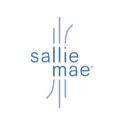 | Not Available | 15 minutes | 1.13% - 11.23%¹ (with autopay) | 3.50% - 12.60%¹ (with autopay) | View disclosures |

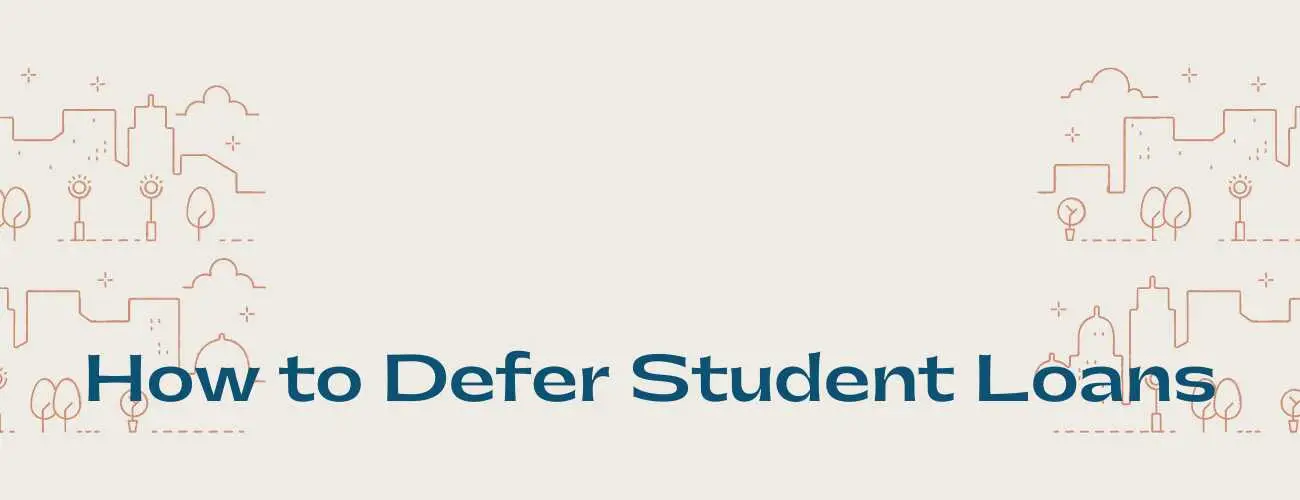
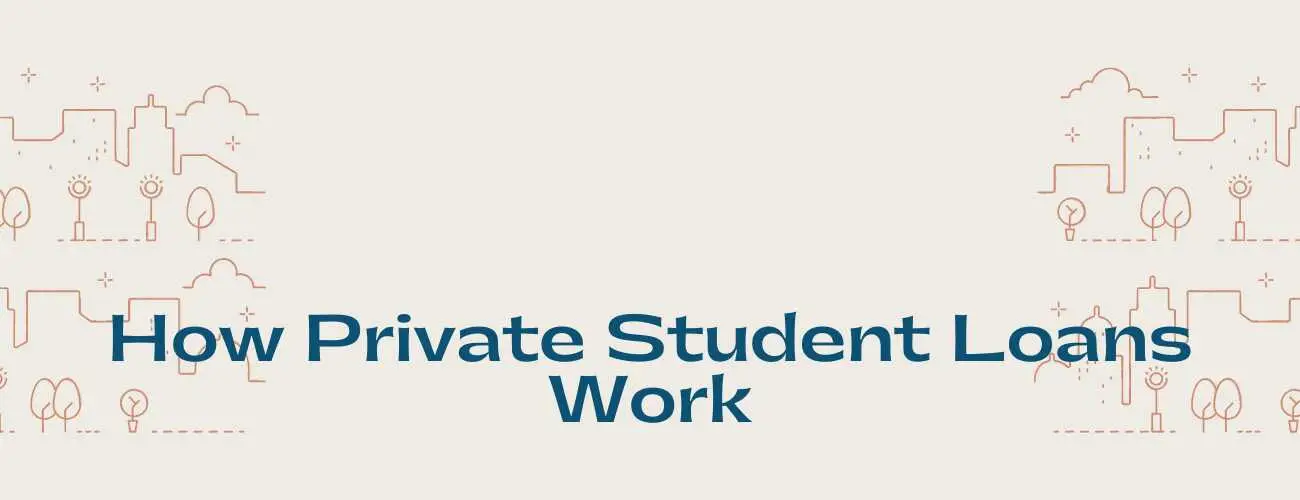
93.jpg)
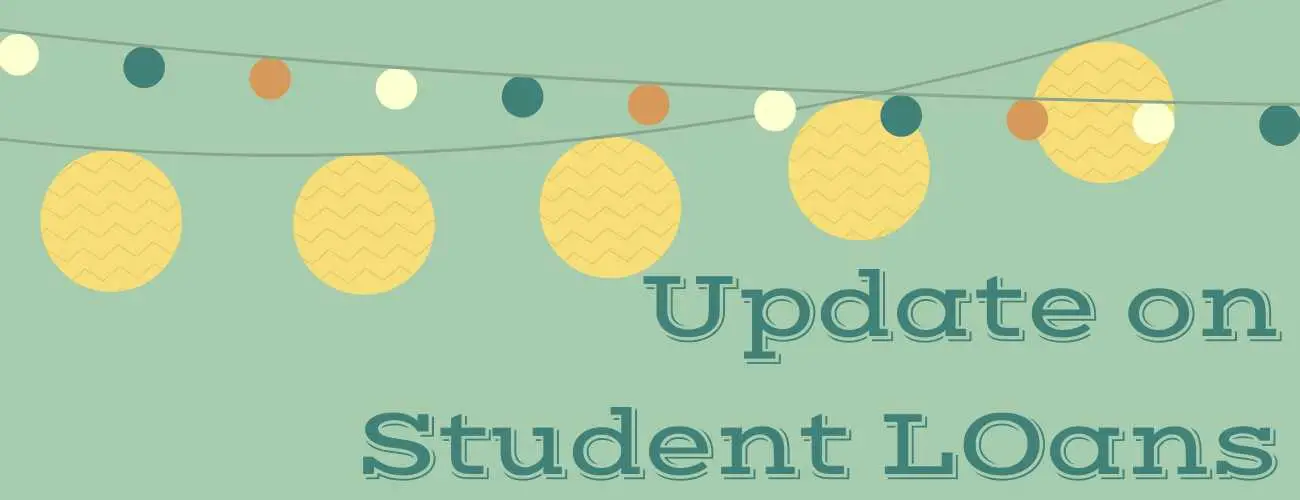

28.jpg)
